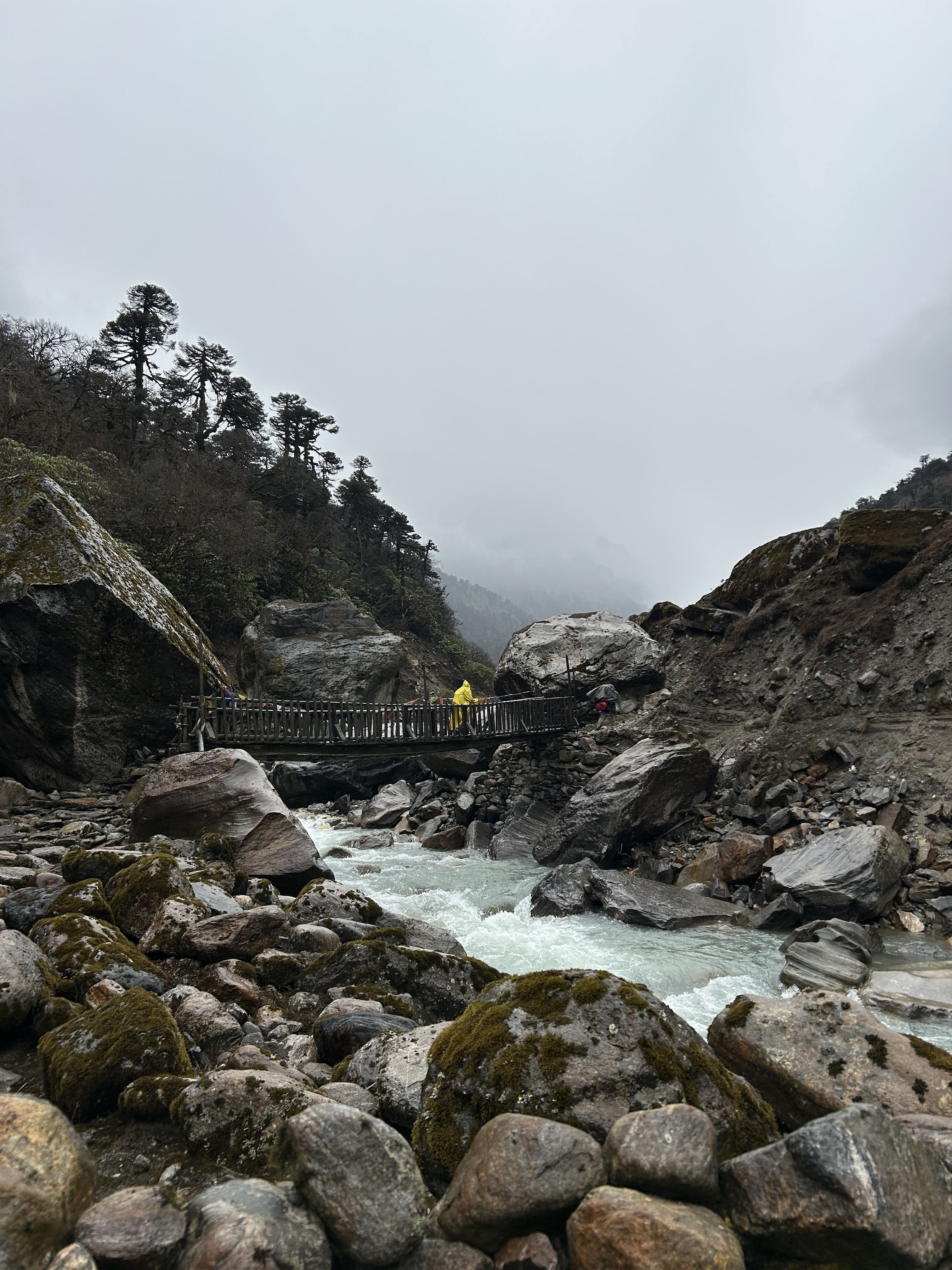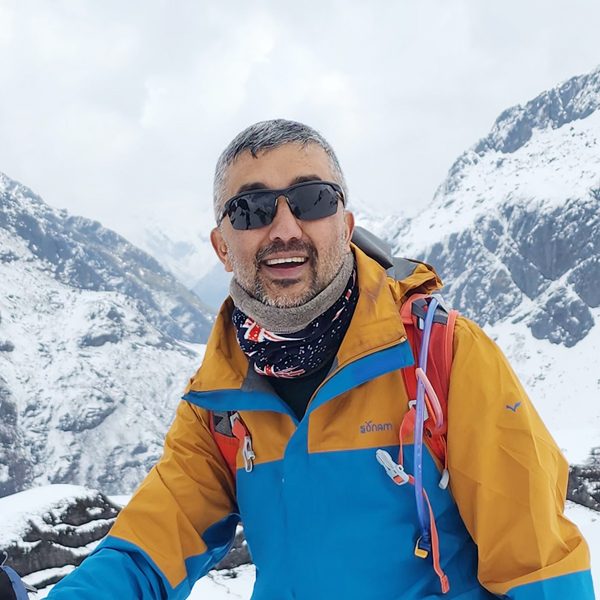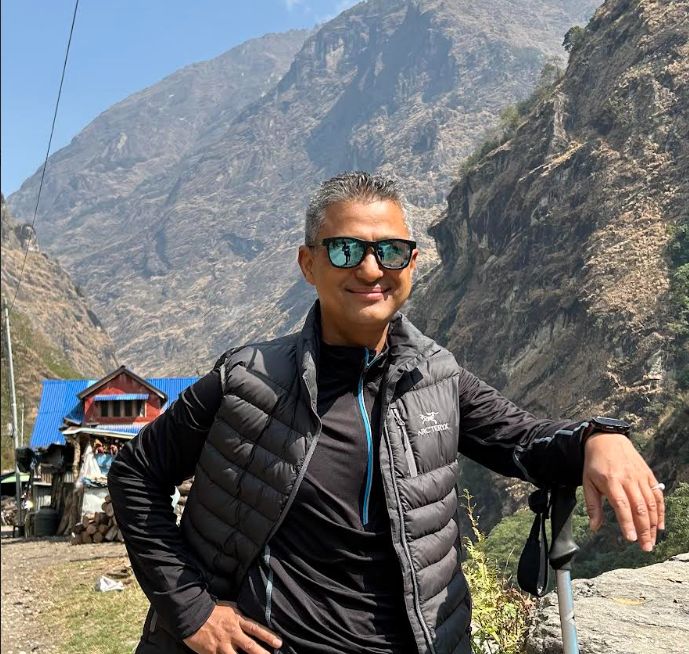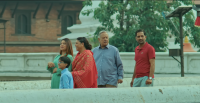Culture & Lifestyle
Across passes and valleys on the Makalu-Barun trek
What began with a cancelled flight turned into an eleven-day trek marked by snowfall, Sherpa hospitality, and reminders of how unforgiving the mountains can be.
Prakash Regmi & Aman Jonchhe
Just two days before our long-awaited Makalu-Barun trek, the travel agent called with some unexpected news: “Dai (brother), the flight to Tumlingtar has been cancelled.” Our dream journey was about to fall apart before it even began.
In Kathmandu, the air was thick with toxic haze, typical for late March and early April. The smog stung our eyes and triggered persistent coughs. Conversations over tea and newspaper headlines blamed the forest fires. Long ago, community forest user groups strictly regulated such fires. But today?
That same pollution grounded our flight to Tumlingtar. We quickly pivoted, opting to fly to Biratnagar instead, and then drive by jeep to Khandbari. The domestic terminal was packed with foreign tourists, signalling the start of trekking season.
On our way, Hile welcomed us with a heavenly aroma of freshly barbequed ‘Dharane Bangur’, and we devoured it with warm Tomba.
That evening in Khandbari, we listened to tales of one-sided (Ek Mukhi) Rudraksha beads being auctioned for as much as seven million rupees. True or not, there was no denying the town’s newfound energy, fuelled by hydropower projects and its proximity to Makalu.
We took a bumpy ride from Khandabari to Seduwa, where we spent the night.
A scenic trail led us through vibrant terraced hills, bamboo groves, and swaying trail bridges towards our guide Chhiring’s village—Tashi Gaun, which is predominantly a Sherpa village. His wife, Phurlamu—a former guide fluent in French—greeted us with warmth and delicious local fare: local chicken curry and fresh greens with rice. Her quiet pride in their shared venture—he guides, she runs the lodge—was endearing.
The stretch from Tashi Gaun was tough—steep ascents and slippery descents. The forest was dotted with rhododendrons—some in full bloom, others bare. Chhiring told us that untimely and unpredictable snowfall has negative implications for farmers. Considering the weather, altitude, and the need to conserve energy, we decided to spend the night at Danda Kharka.
The trail was icy, the air crisp. Because of the rain last night, snow-covered paths were fully shrouded in fog. We learned to expect the unexpected. Shuva, who had begun the journey cautiously due to knee pain, felt his confidence growing. Upon reaching Hotel Shiva View in Khongma Danda—run by Chhiring’s mother—we encountered numerous foreigners, both trekkers and summiteers.
From Khongma, it would take us a day to cross over four high passes above 4,000 metres. Snow began to fall gently as we climbed—weather conditions were deteriorating rapidly. The trail vanished beneath a blanket of white—no footsteps, no landmarks. Prakash, trekking in snow for the first time, looked both terrified and thrilled. Elizabeth compared the scene to her Swiss home. Aman prefers to walk slightly apart from the group, being reflective, lost in his own thoughts, quietly immersed in the serenity of nature and Sufi music.
.jpg)
But the moment we reach our destination, he transforms completely—eagerly joining the circle for cards and shared snacks, laughing and blending right in.
Chhiring reassured us, “Don’t worry. We’re here to show the way.” For the first time, we truly grasped why Sherpas are indispensable in the mountains and hills. Even the gentler mountain passes felt intimidating—one slip, and who knows where you’d end up. As Aman put it, “Prakash, one mistake…game over!”
Reaching Tutu La after Khongma and Sheptung La felt no less than summiting Everest itself. But still, there was no sign of the weather improving. By nightfall, we reached Dobate, where this time Chhiring’s younger brother Sonam—an Everest summiteer—ran the only lodge.
But the journey took its toll. Shuva’s knee injury worsened, forcing him to remain behind. That night, we learned that a trekker had died in a rockfall the previous day—a sobering reminder.
Into the Barun Valley
From Dobate, the snow-covered trail glistened under a muted sun. The steep descent was lined with uneven stairways—some tall, some short—built to minimal technical standards. The porters, who were carrying heavy loads, said these poorly made steps made it even harder for them to walk and bear the weight. Even absurd were the narrow steps. A German trekker commented that his feet didn’t fit into the narrow steps—as a result, he had to climb and descend sideways!
Along the way, we passed a man carrying his friend down from the mountains—another young trekker, possibly suffering from altitude sickness. His oxygen level read just 26. We had little to offer but our prayers.
We met some Nepali youths during our trek who had a limited understanding of mountains and were very poorly equipped to climb. High-altitude trekking should not be taken lightly. It poses significant risks, primarily related to altitude sickness and the physical demands of the environment. Proper preparation, acclimatisation, and awareness of potential dangers are crucial for a safe and enjoyable experience. This typically involves gradually increasing altitude, incorporating rest days during a trek, shorter walks, and days when you climb high but return to lower elevations to sleep.
Beyond Khongma Danda, no form of communication worked. If the weather worsens and a helicopter evacuation is needed, a satellite phone is the only option—and even that must be borrowed from foreign expedition groups. In an age of unprecedented technological progress, seeing messages still relayed through porters raises a troubling question: Is the government merely here to collect royalties, or does it bear any real accountability?

Neither Nepal Police nor the Army are seen anywhere along these remote routes. We also realised the urgent need to standardise minimum wages and provide proper equipment for porters, as there were clear signs of exploitation.
Beyond that, the landscape opened up—on one side, the towering cliffs of Chejidukhang and Chelkidukhang (interestingly, during our conversation with Chhiring, we learned that these local names were later replaced by Shiva Dhara and Parvati Dhara by Hindu pilgrims in the last ten years). The beauty of federalism lies in recognising and respecting cultural, religious, and identity diversity. The Barun River’s downstream is holy to the locals. Mountain communities revere mountains and lakes as the abodes of gods and goddesses.
Yangle Kharka, nestled in this breathtaking setting, felt like a slice of paradise. The alpine pasture was stunning—framed by towering cliffs and waterfalls. The only lodge there belonged to Chhiring’s uncle, continuing the family’s presence along our route.
The final morning
At 5 am, a knock on the door. “Wake up, akaash khulyo (the sky’s clear!) Come see Makalu!”, we heard excited Chhiring calling us. We rushed out, breathless. For the first time in days, the clouds had parted. Makalu stood before us, majestic and solemn. It felt like a victory.
But the joy was short-lived. We learned that the young, sick dentist we had met in Seduwa had passed away after crossing Sheptung La on his way back. If only communication channels were better—perhaps a helicopter could have saved him. With heavy hearts, we decided to turn back from Tadosa. The weather promised only more storms.
Collective memories
As you go along the Yangla trail, past the hill of ChejiDukhang towards the east, there stands a massive rock in front of the mountain. Its shape resembles that of a pregnant woman. The Sherpas of Khempalung call it ‘Aama Bhujung’, meaning ‘Mother Bhujung.’ There is a strong belief among women that if they are childless or wish for a child, their prayers will be answered if they ask Mother Bhujung.
For eleven days, we played cards, nibbled on Swiss chocolates and dried meat, and marvelled at how altitude made everything taste better.
We returned home with stories, local knowledge, laughter, a touch of grief, and the quiet satisfaction of a journey not quite completed—but wholly refreshing and fulfilling.
(With additional contributions from Shuva Sharma and Elisabeth von Capellor.)




 13.12°C Kathmandu
13.12°C Kathmandu
















